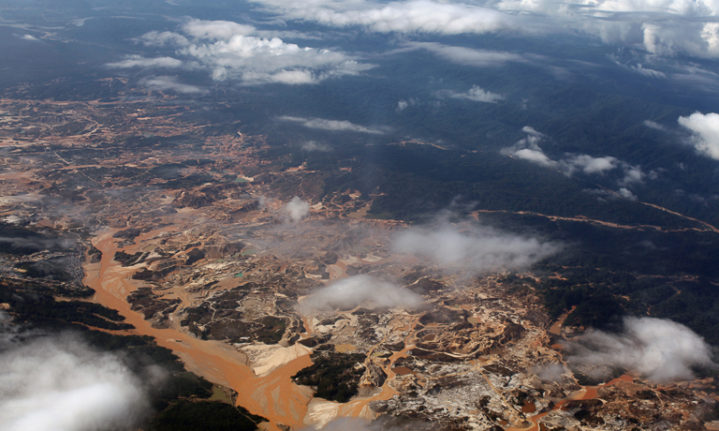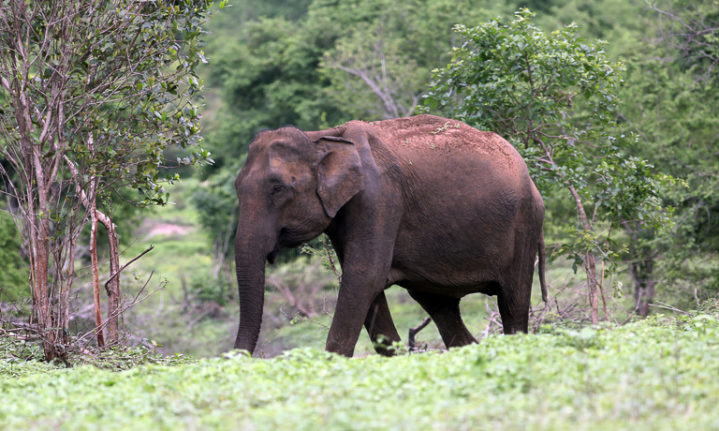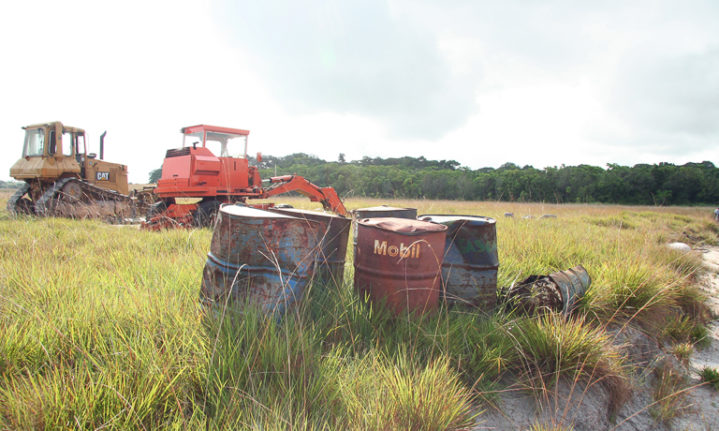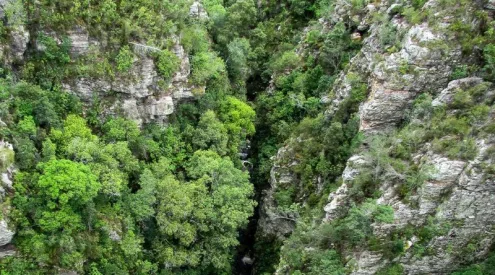The world’s leaders, private companies and individuals must take a coordinated approach to address three environmental calamities facing the Earth at this moment, according to a report released Feb. 18 by the U.N. Environmental Programme (UNEP).
Climate change, biodiversity loss, and air and water pollution have resulted from what U.N. Secretary-General António Guterres said has been “unsustainable production and consumption,” threatening human health and the global system underpinning our society.
“Without nature’s help, we will not thrive or even survive, and for too long we have been waging a senseless and suicidal war on nature,” Guterres told reporters at the release of the report, “Making Peace with Nature.” “It’s time we learn to see nature as an ally that will help us achieve the Sustainable Development Goals,” referring to 17 targets that aim to reduce poverty by 2030.
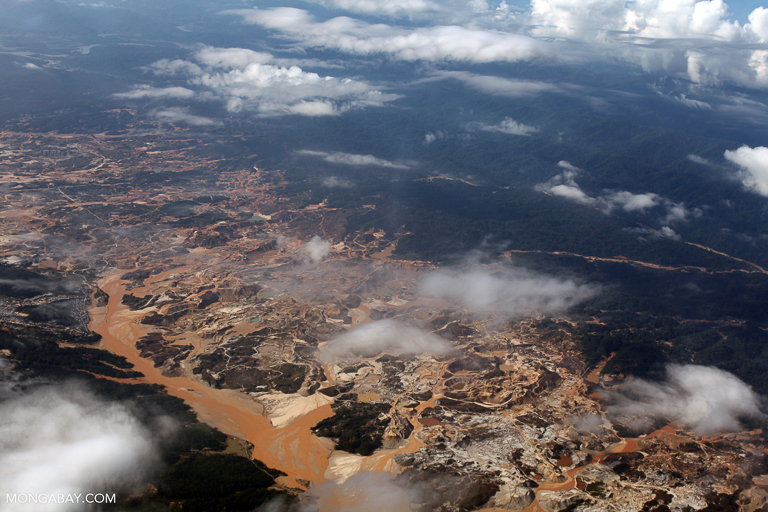
An aerial view of pollution from the Rio Huaypetue gold mine in Peru. Image by Rhett A. Butler/Mongabay.
The UNEP report notes that human innovation has brought a staggering surge in wealth in recent decades. The world’s economy is five times the size it was 50 years ago. In that time, humans have tripled both the extraction of natural resources and the output of lands under cultivation.
But that prosperity has come at a cost, the brunt of which has been borne by the world’s 1.3 billion poorest. The average global temperature is currently on track to rise by 3° Celsius (5.4° Fahrenheit) over pre-industrial levels, owing mostly to the carbon that human activity has already released into the atmosphere. We’ve cleared away 10% of the world’s forest cover since 1990, dispensing with a primary mechanism for keeping the quantity of atmospheric carbon in check and removing critical habitat for untold numbers of species.
An eighth of the world’s plants and animals — about 1 million species in all — face the threat of extinction, according to 2019 research from U.N.’s Intergovernmental Science-Policy Platform on Biodiversity and Ecosystem Services (IPBES), as forests and other ecosystems have been removed to make way for agriculture, cities and resource extraction. Legal and illegal hunting and fishing for traditional medicines and food, too, have whittled away species’ numbers. And scientists are currently tracking a precipitous decline in insect numbers, likely a knock-on effect of a changing climate, higher chemical loads and changes to their habitats.
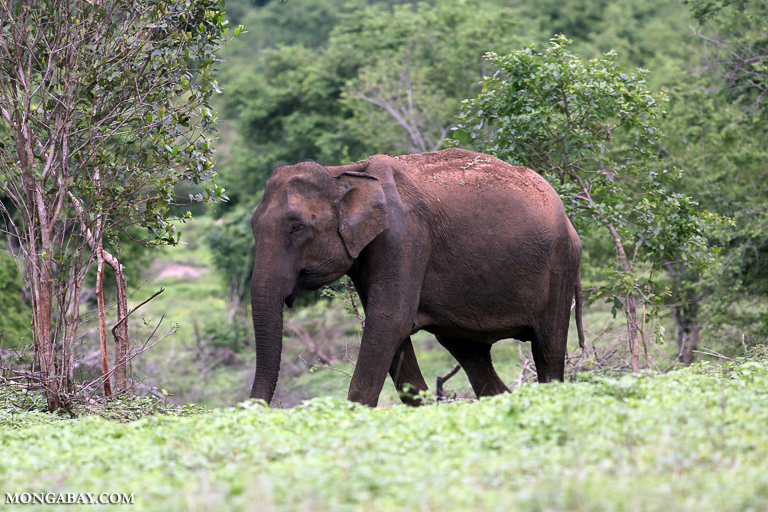
An elephant in Sri Lanka’s Udawalawe National Park. Image by Rhett A. Butler/Mongabay.
The industrialization and agricultural intensification that helped ignite the global economic boom have also sullied the air and water that we depend on. This pollution kills millions of people prematurely each year, again primarily from the ranks of the world’s poorest.
Biodiversity loss, chemical pollution and climate change represent three of the nine “planetary boundaries” that scientists first proposed in 2009 as a way of assessing the risks that human activities pose to “the Earth System.” Calculations for each, such as the concentration of CO2 in the atmosphere for climate change, provide a snapshot of whether we’ve crossed critical thresholds. That information could tell us how close we are to dangerously destabilizing the planet and with it the “safe operating space for humanity,” as the authors of the 2009 paper put it.
According to that study and an updated 2015 paper on the planetary boundaries, the Earth has surpassed the safe limit for climate change. The loss of biodiversity and specifically genetic diversity is also well past the safe limit, potentially jeopardizing the integrity of the biosphere.
But despite the grim statistics revealing the human toll of chemical pollution in the water and the air, scientists still don’t have comprehensive data on human-made chemicals in the environment, their persistence, and the danger they pose to the global system.

Two agents of climate change pictured together: oil and land-use change. Image by Rhett A. Butler/Mongabay.
Drawing on recent assessments aimed at capturing the breadth and scale of these three environmental “emergencies,” the authors of the UNEP report set out to define what needs to be done to tackle them.
In the preface, lead report authors Ivar Baste and Robert Watson write that “the findings of the assessments are interlinked and add up to an unparalleled planetary emergency.” Baste is with the Norwegian Environment Agency, and Watson chairs the IPBES.
“The environmental emergencies that have been outlined in the report all flow directly from humanity’s overconsumption resources, overproduction of waste, and prioritization of short-term gain with the consequences of long-term pain,” Inger Andersen, executive director of UNEP, said at the press conference. “But all is not lost.”
Serving as a blueprint for action, the report calls on governments to stop subsidizing the production of carbon-emitting fossil fuels and industrial agriculture, and instead redirect those funds into sustainable livelihoods that don’t put as much pressure on the climate.
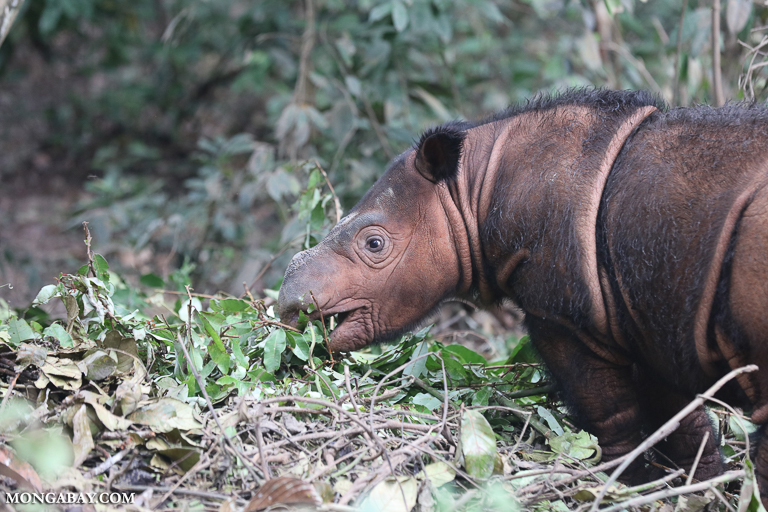
Andersen said putting a price on the carbon emitted by countries and companies could help instigate a shift away from harmful practices and toward net-zero carbon emissions by 2050.
“We … know — let’s be honest — that taxing pollution works,” she said.
Grappling with biodiversity loss will require expanding the network of protected areas around the globe and improving the surveillance, location selection and connectivity of them on land and sea.
There are signs of progress. On Feb. 19, the U.S. made its official return to the Paris climate accords. The move to rejoin the 125 other nations that signed onto the agreement in 2015 symbolized a shift in policy for the U.S., the country with the second-highest carbon emissions, after China. But it also entails financial support for climate-friendly development from the U.S. and other industrialized countries to poorer nations.

Global meetings on biodiversity and climate change are slated for 2021, emphasizing the need for a worldwide effort to address the challenges laid out in the UNEP report.
Guterres struck a hopeful tone, suggesting that human ingenuity was up to the task.
“This report shows that we have the knowledge and the ability to meet these challenges,” he said. Still, he said that efforts to cut carbon emissions, stem the flow of pollutants into the global system, and elevate the protection of biodiversity must begin anew in 2021.
“It’s a make it or break it year indeed,” Guterres said.
Source: Mongabay
Citations:
Rockström, J., Steffen, W., Noone, K., Persson, Å., Chapin III, F. S., Lambin, E., … & Foley, J. (2009). Planetary boundaries: exploring the safe operating space for humanity. Ecology and Society, 14(2).
Steffen, W., Richardson, K., Rockström, J., Cornell, S. E., Fetzer, I., Bennett, E. M., … & Sörlin, S. (2015). Planetary boundaries: Guiding human development on a changing planet. Science, 347(6223). doi:10.1126/science.1259855









